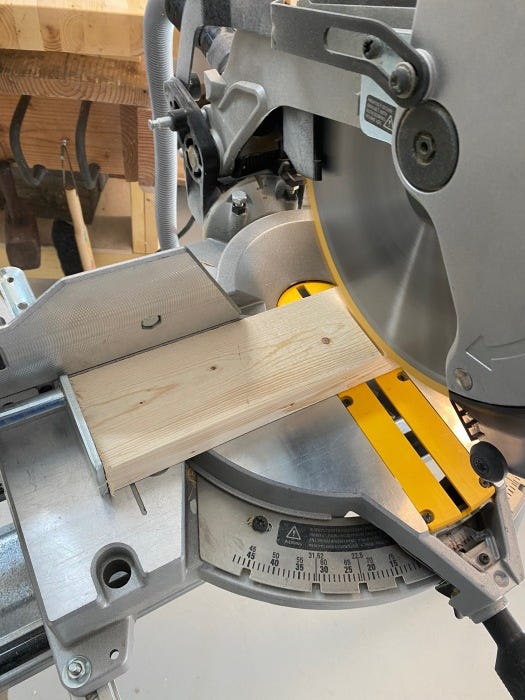Easiest. Project. Ever.
Some projects are really complicated, requiring special tools, advanced joinery, multiple species of wood, skilled techniques, patience, expertise and time.
This is not one of those projects.
As I've mentioned before, I found myself with a large pile of extra 2x4s and 2x6s thanks to some demolition work I had done in the garage. Many of the straighter pieces I used for greenhouse benches and a shop table project. But I still had lots left over... including pieces that were rather short or otherwise unideal — cupped, twisted, etc.
The thing about wood such as that, though, is that the shorter the pieces, the less problematic the cups, twists and warps. That is to say, imagine you have an 8-foot board with an even curve such that when the two ends are each touching a level ground, the center is an inch above the ground. That's pretty noticeable. But if you cut the board into eight one-foot segments, now the curve is only ⅛ of an inch across that span, which is pretty insignificant, depending on the situation.
So, what could I do with shorter pieces? Then it hit me. Oversized Jenga.
One key to Jenga is that the width of a block should be exactly ⅓ the length so that as the blocks are laid in an alternate fashion, it creates a square and even tower.
I measured by processed 2x4s and found them to be three inches wide. So, each board needed to be cut to nine inches in length. A typical Jenga set has 54 blocks. So, I set about processing my leftover 2x4s until I had 54 nine-inch blocks. That barely made a dent in my stash of boards, so I made 54 more. One set for me and one set to give as a gift.
Now, I could have stopped there. After all, Jenga is just a board stacking game and I had all the pieces cut to size. But, these blocks were rough, had sharp corners and just lacked the kind of polished quality you would expect from an oversized Jenga set made from leftover construction lumber.
The next step, then, was to take the pieces to the router table and put a ¼-inch rounder on every edge/corner. That would make the pieces more comfortable to handle and lesson the chance of splinters.
Then my dad, who was visiting at the time and taking a break from working on his boat, took each piece to a sanding station we set up — basically a sanding drum on the drill press and a belt sander turned on its side — to clean all of the faces and sides. It actually was surprising how nice the blocks now felt.
The final step was to apply a finish to the blocks. For the sake of simplicity, we decided to just apply a coat of boiled linseed oil. That would protect these handcrafted game pieces and also make them slightly more slick, handy for gameplay.

And that was it. Our Jenga sets were complete. I kept one for our house and then gave the other to my brother for his birthday. It'll be perfect for his many house parties.
I suspect I'll make more, too. It's easy, fun and people do enjoy playing it.
Of course, no project is ever really complete. I'm now thinking about building boxes to hold one of the 54-piece sets.





